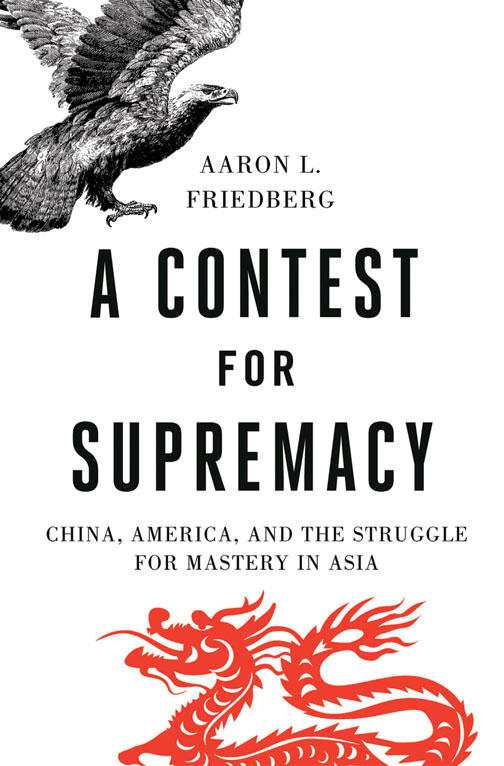China vs. America
“These experiences left me deeply troubled about where China was headed and about the future direction of relations between that country and my own,” Friedberg writes in his new book, A Contest for Supremacy: China, America, and the Struggle for Mastery in Asia, to be published by W.W. Norton in August.
A professor of politics and international affairs and co-director of the Woodrow Wilson School’s Center for International Security Studies, Friedberg was concerned that few people seemed to share his sense of trouble. He writes of a “willful, blinkered optimism” among both political and business leaders who were eager to engage with China for economic purposes, but overlooked the problems posed by a powerful Chinese state. Today, many people still underestimate China and its sway on the world stage, Friedberg says. If left unchecked, Beijing could be in a position to deny the United States “access to markets, technology, and vital resources” and even potentially to launch an attack.
For the last 10 years, Sino-American relations have been overshadowed by the wars in Iraq and Afghanistan. But now, Friedberg believes the dynamics are starting to shift, and he hopes that the United States will approach its relationship with China with the seriousness and caution it deserves.
He’s encouraged by the evolution of the Obama administration’s approach to China. The president’s foreign-policy team began by emphasizing engagement with Beijing, but ultimately changed tactics after its policy seemed to encourage Chinese belligerence. Like his predecessors, Obama eventually embraced a “congagement” approach, Friedberg contends, which seeks to limit China’s influence (containment) while at the same time working with China when possible (engagement) — usually on matters of business and trade.
Some of the sources of conflict are familiar: U.S. support for the Dalai Lama and Tibetan people, for example, and the supply of defense weapons to Taiwan. Friedberg also cites the escalating rivalry over control of the oceans.
The United States traditionally has held an edge in military power, but China recently has been flexing its muscles — for example, deploying more than 1,000 ballistic missiles in preparation for a possible confrontation with Taiwan.
Above all, China presents “an intellectual challenge” to the United States, Friedberg writes. Here is a nation that is “neither a trusted friend nor a sworn enemy.” China’s one-party government is directly at odds with American democratic ideals, yet the United States is deeply connected to the Chinese economy. The United States, of course, disapproves of China’s treatment of political dissidents, but then again, China is the U.S. government’s largest creditor. Washington should work to reduce its debt to China, Friedberg writes.
Key to establishing a balance of power in East Asia is the strengthening of regional alliances, he says. China’s evolving power has alienated other countries in Asia. Friedberg argues for stronger U.S. relationships with countries like India, Indonesia, and Vietnam. He also makes the case for building up the U.S. military presence in the region, lest China gain the edge in an “increasingly intense” military competition.














No responses yet